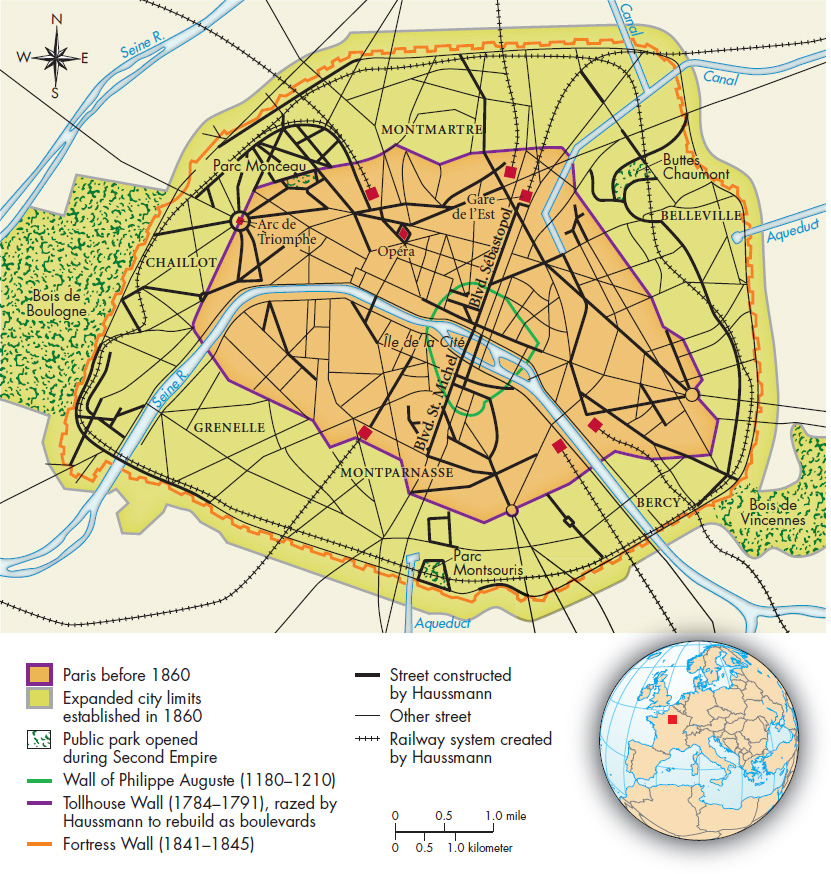A History of Western Society: Printed Page 724
A History of Western Society, Value Edition: Printed Page 729
Improvements in Urban Planning

In addition to public health improvements, more effective urban planning was a major key to a better quality of urban life in the nineteenth century. France took the lead in this area during the rule of Napoleon III (r. 1848–1870), who sought to promote the welfare of his subjects through government action. He believed that rebuilding much of Paris would provide employment, improve living conditions, limit the outbreak of cholera epidemics — and testify to the power and glory of his empire. In Baron Georges Haussmann (HOWS-muhn) (1809–1884), an aggressive, impatient Alsatian whom he placed in charge of Paris, Napoleon III found an authoritarian planner capable of bulldozing both buildings and opposition. In twenty years Paris was completely transformed (Map 22.2).
The Paris of 1850 was a labyrinth of narrow, dark streets, the results of desperate overcrowding and a lack of effective planning. More than one-third of the city’s 1 million inhabitants lived in a central district not twice the size of New York’s Central Park. Residents faced terrible conditions and extremely high death rates. The entire metropolis had few open spaces and only two public parks.
For two decades Haussmann and his fellow planners proceeded on many interrelated fronts. With a bold energy that often shocked their contemporaries, they razed old buildings in order to cut broad, straight, tree-lined boulevards through the center of the city as well as in new quarters rising on the outskirts. These boulevards, designed in part to prevent the easy construction and defense of barricades by revolutionary crowds, permitted traffic to flow freely and afforded impressive vistas. Their creation also demolished some of the worst slums. New streets stimulated the construction of better housing, especially for the middle classes. Planners created small neighborhood parks and open spaces throughout the city and developed two very large parks suitable for all kinds of holiday activities — one on the affluent west side and one on the poor east side of the city. The city improved its sewers, and a system of aqueducts more than doubled the city’s supply of clean, fresh water.
Rebuilding Paris provided a new model for urban planning and stimulated urban reform throughout Europe, particularly after 1870. In city after city, public authorities mounted a coordinated attack on many of the interrelated problems of the urban environment. As in Paris, improvements in public health through better water supply and waste disposal often went hand in hand with new boulevard construction. Urban planners in cities such as Vienna and Cologne followed the Parisian example of tearing down old walled fortifications and replacing them with broad, circular boulevards on which they erected office buildings, town halls, theaters, opera houses, and museums. These ring roads and the new boulevards that radiated outward from the city center eased movement and encouraged urban expansion. Zoning expropriation laws, which allowed a majority of the owners of land in a given quarter of the city to impose major street or sanitation improvements on a reluctant minority, were an important mechanism of this new urban reform movement.